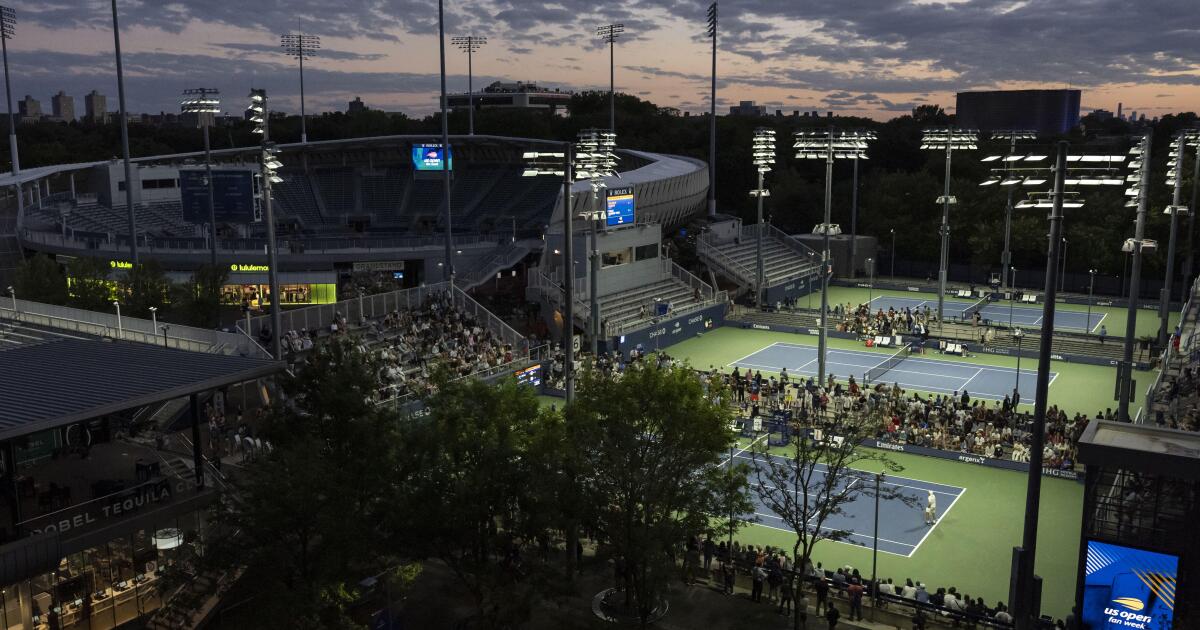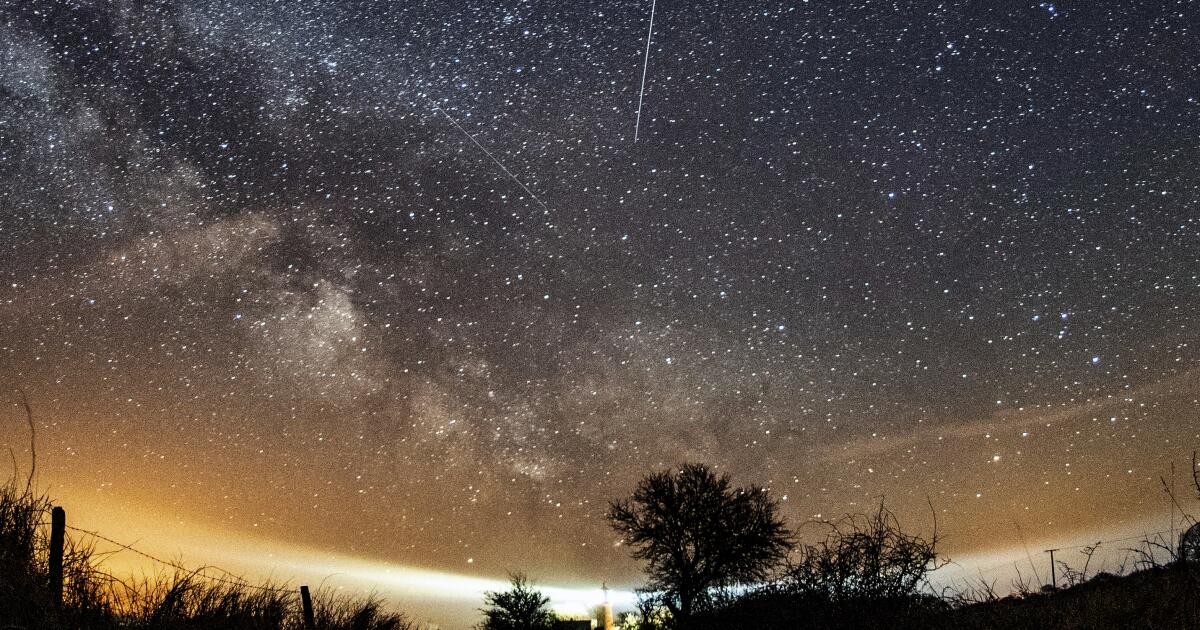How U.S. Open tennis courts are helping to cut light pollution
NEW YORK — When the court lights flicker on at the U.S. Open, tennis stars shine under illumination designed to cut light pollution.
The wedge-shaped lamps around the USTA Billie Jean King National Tennis Center in Flushing Meadows direct light onto the players without spewing it into the surrounding skies.
The stadium complex is the only professional sports venue certified by a group that’s trying to preserve the night sky around the world. Across North America and Canada, schools and local parks have also swapped out their lights on baseball fields, running tracks and other recreation grounds to preserve their view of the stars and protect local wildlife.
Night lights can disrupt bird migration and confuse nocturnal critters like frogs and fireflies. Lights on sports fields are especially bright and cool, and often cast their glare into neighborhoods.
In renovations over the last decade, the U.S. Tennis Assn. swapped metal halide bulbs for shielded LED lights. The complex’s 17 tournament courts — including Arthur Ashe Stadium — and five practice courts were approved as dark sky-friendly last year.
USTA officials wanted the best lighting possible on their courts, which also happened to be friendly to dark skies. Their lighting company suggested striking a balance that would satisfy crowds and TV crews while cutting down spillover into the surrounding environment.
“This is an international event that has an impact on the community,” said the USTA’s managing director of capital projects and engineering, Chuck Jettmar. “Let’s minimize that and make sure that everybody’s happy with it.”
Designing lights for dark skies
U.S. Open qualifying matches last week were punctuated by players grunting, crickets chirping and audiences cheering. Rows of lights stood like sentries above, adorned with flat visors that guided the glow onto the action.
The lights at Flushing Meadows glow at a quarter of their brightness when the courts are rented for play during the year. They’re approved by DarkSky International, a nonprofit that gives similar designations to cities and national parks. The group widened its focus to include sports arenas in recent years and has certified more than 30 venues since 2019 — including high school football fields and youth soccer fields.
“We live in a world where we need to engage with one another in the nighttime environment, and that’s OK,” said DarkSky spokesperson Drew Reagan. “That’s a beautiful thing and there’s a way to do that responsibly.”
The organization typically approves proposals at sports fields before any light fixtures are installed or replaced. Once construction is complete, a representative measures the glow and glare against a set of guidelines that benefit the night.
Renovating a field with dark skies in mind can cost about 5% to 10% more than traditional sports lighting, according to James Brigagliano, who runs DarkSky’s outdoor sports lighting program. Venues may require a few extra fixtures since the light shining from them is more targeted.
Most arenas make the change during scheduled maintenance and renovation, working with sports lighting company Musco. The company lights more than 3,000 venues a year, including college football stadiums, tennis courts and rail yards.
At Superstition Shadows Park in Apache Junction, Ariz., kids play T-ball and baseball in the evenings, when the darkness offers a brief respite from the summer heat. The city’s parks and recreation department replaced its already-aging lights with shielded, dark sky-friendly fixtures last year with federal and local government funding.
People venture to Apache Junction partly because “they can get out of the city and still see stars,” said the city’s parks and recreation director, Liz Langenbach. The city is at the edge of the Phoenix metro area, bordered by rolling mountains and sweeping deserts.
“The choices we make on lighting, I think, affect all of that,” Langenbach said.
At Université Sainte-Anne in Canada, students run on a new track and soccer field outfitted with lights that DarkSky approved last year. Researchers at the university study native, nocturnal animals like the northern saw-whet owl.
The lights are “good for everyone,” said university spokesperson Rachelle LeBlanc. “For tourism, for our students, for our neighbors, for the animals that we share our campus with.”
How to cut light pollution
Night lights harm the surrounding environment no matter how shielded they are. DarkSky-approved fields still allow a small fraction of their light to be pointed up because it’s necessary to keep track of flying balls.
“You can have the absolute best, most carefully designed stadium lighting in the world, and you’re still creating light pollution,” said Travis Longcore, an urban light pollution expert at UCLA.
The U.S. Open courts are side-by-side with bright lights from Manhattan and Queens — so they can only darken a slice of the sky. But DarkSky says every light fixture makes a difference, and one professional arena can influence others.
“I’m not saying we as humans have to turn all the lights off,” said Longcore. “I think you have to make improvements from where you are.”
Ramakrishnan writes for the Associated Press. The Associated Press Health and Science Department receives support from the Howard Hughes Medical Institute’s Department of Science Education and the Robert Wood Johnson Foundation. The AP is solely responsible for all content.

